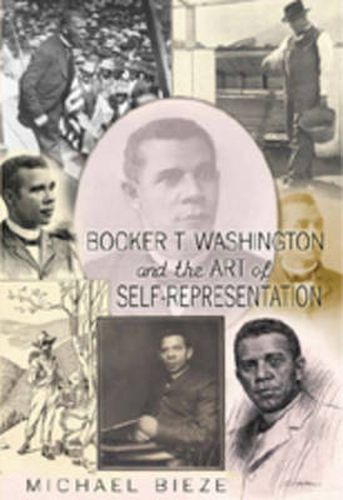Readings Newsletter
Become a Readings Member to make your shopping experience even easier.
Sign in or sign up for free!
You’re not far away from qualifying for FREE standard shipping within Australia
You’ve qualified for FREE standard shipping within Australia
The cart is loading…






Booker T. Washington embraced photography as the artistic medium to represent himself and Tuskegee Institute because it was economical, technical, utilitarian, and aesthetic: an apt form for a man who preached a gospel of thrift, industry, self-sufficiency, and beauty. Advancements in photography at the end of the nineteenth century allowed Washington to be simultaneously better known and more elusive - an international celebrity with a multitude of identities.
Washington produced and directed photographic images by considering region, race, and class. Initially, he crafted an image of Victorian grace as a fund-raising strategy which appealed to elite white America’s belief in gradual reform. As Washington entered the last decade of his life, he gradually shifted his efforts toward speaking directly to black audiences with the support of black photographers. He shed the passive role he presented to the white world and challenged racist popular culture by visually demonstrating social and cultural equality.
Washington should be credited with not only launching the careers of several black photographers but also with establishing the early aesthetic of the New Negro . From 1895-1915, Washington was the central figure in African American culture, supporting black artists telling black stories in the contemporary Victorian aesthetic, and showing how blacks could equal whites artistically and culturally.
$9.00 standard shipping within Australia
FREE standard shipping within Australia for orders over $100.00
Express & International shipping calculated at checkout
Booker T. Washington embraced photography as the artistic medium to represent himself and Tuskegee Institute because it was economical, technical, utilitarian, and aesthetic: an apt form for a man who preached a gospel of thrift, industry, self-sufficiency, and beauty. Advancements in photography at the end of the nineteenth century allowed Washington to be simultaneously better known and more elusive - an international celebrity with a multitude of identities.
Washington produced and directed photographic images by considering region, race, and class. Initially, he crafted an image of Victorian grace as a fund-raising strategy which appealed to elite white America’s belief in gradual reform. As Washington entered the last decade of his life, he gradually shifted his efforts toward speaking directly to black audiences with the support of black photographers. He shed the passive role he presented to the white world and challenged racist popular culture by visually demonstrating social and cultural equality.
Washington should be credited with not only launching the careers of several black photographers but also with establishing the early aesthetic of the New Negro . From 1895-1915, Washington was the central figure in African American culture, supporting black artists telling black stories in the contemporary Victorian aesthetic, and showing how blacks could equal whites artistically and culturally.